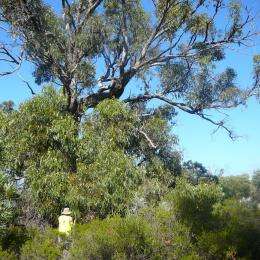Could 'hotspots' in burn offs aid tuart regeneration?

Murdoch University academics are investigating whether creating ‘hotspots’ in controlled burn offs in tuart forests will effectively stimulate regeneration in the trees.
Dr. Katinka Ruthrof and Dr. George Matusick from the Murdoch University-based Center of Excellence for Climate Change and Forest and Woodland Health, have designed regeneration trials to work within the controlled burning program by the Department of Environment and Conservation (DEC) at various sites on the Swan Coastal Plain.
The burn offs are carried out by DEC primarily for community safety and to provide biodiversity benefits. Tuart trees need the heat from fire to release their seeds from fruit held in their canopies. The high temperatures also create ash-beds. These sterilise the soil, increase water infiltration, remove competition and can result in groups of rapidly growing tuart seedlings.
The Murdoch researchers and groups of enthusiastic volunteers including Friends of Paganoni Swamp, Murdoch Tafe, NOW Green and DEC staff have been piling up coarse woody debris piles in natural clearings in tuart woodlands at Paganoni Swamp near Rockingham and Yalgorup National Park near Mandurah. This ensures there are hotter areas, or ‘hotspots’ during burn offs in the hope that the resulting ash-beds will provide a better environment for tuart seedlings.
In half of the sites, older tuarts will be allowed to drop their seeds onto the ash-beds. In the other half Dr Ruthrof will spread collected seed. This is because some trees may not have enough seed for regeneration.
“If our trials are successful, we hope this could be a cost effective way to get these young eucalypts off to a good start in life,” said Dr. Ruthrof, who has been researching tuart ecology for more than 10 years.
“In many sites within the tuart distribution, a good seed store has been recorded this year and we need to take advantage of that because these trees only produce seeds intermittently.
“Tuarts are native only to the south west of Western Australia and are a declining species especially at Yalgorup. The population structure in some areas is unsustainable. In these places, if something isn’t done, in 100 years time there may not be any tuarts remaining.
“This winter may be another dry one so we are cautiously optimistic that the ash-bed sites will get enough rain for the young tuarts to get the start they need.”
If the trials are successful, this will provide DEC with a useful method for treating other tuart woodlands throughout the state.
Provided by Murdoch University


















